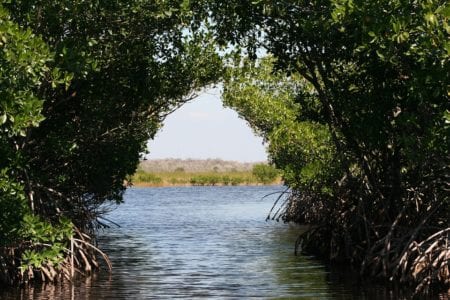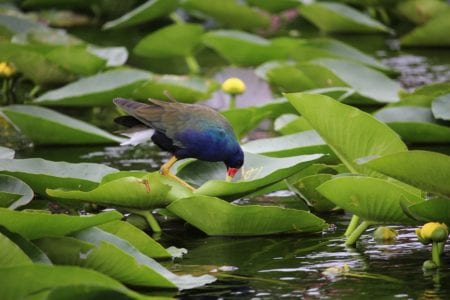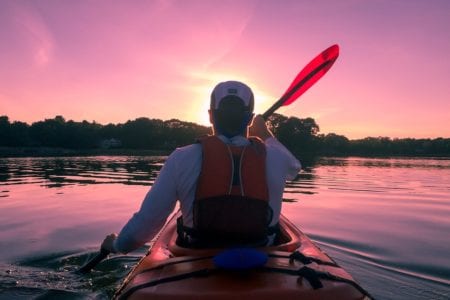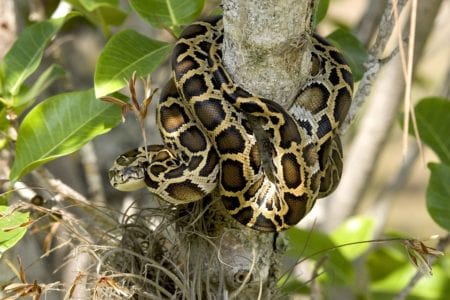
Image credit: TanjaC
The Everglades National Park is a wildlife area, a vast swamp. Only here you will see together the Mississippian alligators and the sharp crocodiles, a rare kind of puma, you will learn why the plant called the sword grass, and what kind of mangroves it is.
At the southern tip of Florida extends the Everglades. This is the largest wetland in the world. From the west it is bounded by the Gulf of Mexico, along the southern border stretches the islands of Florida Keys. The writer Marjory Stoneman Douglas called this unique area of subtropical primitive nature “River of Grass”.
Flora

Image credit: Linda72
The territory of the Everglades National Park is about 20% of the entire area of the Florida marshes. The most part of the reserve is a wild flooded area, overgrown with sword-grass, cypresses, pine woodlands. The swamp feeds the freshwater Lake Okeechobee with water. A shallow river flows from a huge pond with a wide canopy. In places its calcareous bottom rises in small islands, on which grow ferns, orchids, trees. Areas of open water are dotted with water lilies, thickets of grass-pemphigus. Closer to the ocean coast begins the zone of mangrove thickets.
Fauna

Image credit: ataribravo99
In the coastal water area, many fish live, even young sharks are found. In warm creeks, dolphins and turtles are mined; from the sea go the giant manatees. The thickets of marsh cypress were chosen by alligators. In the drought, reptiles are deepened by shallow streams of powerful tails, ensuring the survival of many of the inhabitants of the park.
Everglades – the kingdom of birds
Everglades is the realm of birds. Here there are more than three hundred species, there are rare: a tree stork, a slender kite, a red heron, a bald eagle. In mangrove bushes live red-winged spoonbills, pelicans, wood ibises. From mammals you can find puma and baribala, white-tailed deer, otter.
From the Indians to the National Park
For a long time the swamps were the territory of the Indians. Until the 19th century tribes of tekesta and kalus lived here. People built huts on piles, caught fish, hunted, cultivated plots of land. The first European settlers appeared in 1817. A protracted military conflict began, which ended in 1837 with the death of the militia leader Osceola.
By 1905 the settlers had caused great damage to the local fauna, hunting for birds was prohibited. Later it was necessary to limit the activities of farmers who dried up swamps and polluted the water. Since 1976 the Everglades Park has been declared a UNESCO biosphere reserve, but the struggle of ecologists for the northern areas continues: the marshes are still threatened with dehumidification.
Entrances to the park
In the park there are three sightseeing areas and three entrances: Homestead (about 45 km from the center of Miami), Tamiami Trail Miami, Everglades City. Peak visits to the Everglades – from November to April.
What to do in the park
Pass cards and maps are issued in information centers. Pedestrian paths are laid along the park, you can travel by car, motorcycle, bicycle. Nature lovers can relax in specially equipped campsites.

Image credit: Free-Photos
For a water excursion, you can rent a canoe.
Many companies offer safaris on airplanes. Boats depart every 30 minutes. The journey takes approximately 40 minutes. Then everyone goes to watch the crocodile show.
Safety regulations

Image credit: skeeze
It is recommended to prepare for a visit to the Everglades. Take food and water with you, wear suitable clothes, a headdress, take sunscreen and strong repellents and put on high shoes: swamps of mosquitoes live on swamps, poisonous snakes meet.
